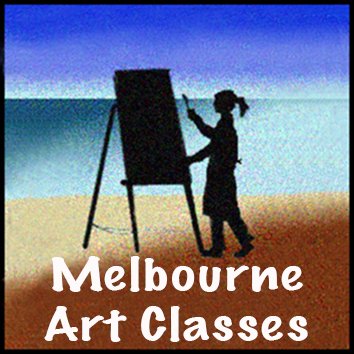Canvas, Linen and other substrates
We recommend to new students to paint on canvas board or student-grade stretched canvases first while working through composition, design, colour exercises and notan exercises, at the same time as practising as many different paint application techniques and approaches as you can.
WHERE TO GET? - Bunnings, Riot Art, Spotlight, $2 shops, there are many choices for cheaper stretched canvases. Look out for two things (if you want to use stretched)* get 30 or 38mm deep (not the 20mm deep stretcher, cheaper but looks bad on the wall unframed, if you intend to frame, maybe get canvas boards))* Check that the corners of the canvas are folded not cut (cut leaves a weak point ).
THE MOST AFFORDABLE OPTION IS canvas board or even canvas pages, however, they require framing to hang (so if you are proud of what you have done, you would wish you have paid a little extra for a stretched 38mm deep canvas, or you will want to spend more and frame it).
HERE IS A LITTLE VIDEO ABOUT A DIY EASEL ALTERNATIVE (if you are a wicked recycler, save up those folded cardboard inserts from new sheets and doonas, they can make a table wedge by taping together the bottom edges)
Professional Grade Canvas
For many centuries artists have used canvas to express themselves creatively, and today canvas remains the most common painting surface of choice for beginners and professionals alike, especially for acrylic painting.
Canvas is a versatile painting surface and comes in a variety of shapes, sizes and forms to suit every need and every budget.
Why Use Canvas ?
Canvas is very flexible in terms of sizes, from tiny to expansive works. However, the two main reasons why canvas is such a popular surface among painters is due to how great it feels under the brush, as well as its obvious longevity. Canvas is also much lighter and easier to transport than traditional wood surfaces that were also commonly used in the past.
Choosing your Canvas
When choosing a canvas there are a number of things to consider, such as fabric weight, texture, and priming. All of these have an effect on the quality of the canvas and what kind of painting it is most suited to.
Fabric
The fabrics used in most canvases are either linen or cotton. Of the two, linen is considered the best due to the quality of the surface and its durability, however, it is also very expensive. Cotton is a more affordable option that provides an excellent surface of suitably durable quality.
Texture
Canvas is constructed of natural fibres that are woven together, producing different textures depending on how finely it is woven. Different textures are suited to different types of painting, where the smooth surface of the finely woven canvas is best suited to smaller, detailed work, rougher weaves are best for broad brush strokes, as well as larger-sized paintings.
Primed or Not Primed
In order to create a surface that will show the true colours of the paint, most canvases are pre-primed with gesso, a mixture of plaster of Paris, glue, chalk or pigment, preventing the paint from being absorbed into the fabric of the canvas. Some artists prime in a base colour as well.
Types of canvas surfaces
Canvases are available in many forms to suit different applications and budgets. The main types are stretched canvas, canvas panels, canvas pads, and canvas rolls.
Stretched canvas
Stretched over a wooden frame, called stretcher bars, stretched canvas is one of the most popular types of canvas for acrylic painting. Usually made of cotton duck, the canvas is primed with gesso to create an ideal painting surface. Canvases are primed for either oil painting or acrylic painting, so make sure you get the right ones. If a canvas is painted first and stretched at a framer, it is more likely that it will be stretched on a “strainer” (true stretcher bars are designed to stretch apart further down the track over time when light sagging may have occurred).
Canvas Rolls
If you’re an experienced painter who likes to prepare and stretch your own canvas, or if you’d like to create very large paintings, then you can get canvas rolls. These rolls of canvas are made from either linen or cotton, come in different weights, textures and fibres, and are available either primed or unprimed. They’re usually sold by the metre, or by the roll, which can get quite expensive.
Before you invest in any canvas, do some research and check out all the options in order to choose the type of canvas that is best suited to your needs, and your pocket.
You will need to also buy stretcher bars, which tap together with tongue-and-groove corners.
Painting Boards
Other than canvas boards, suitable substrates to learn painting on include illustration board, sealed primed mdf, ‘white board' or masonite. Birch panels are nice as well and you can buy them already mounted , called a cradle board







